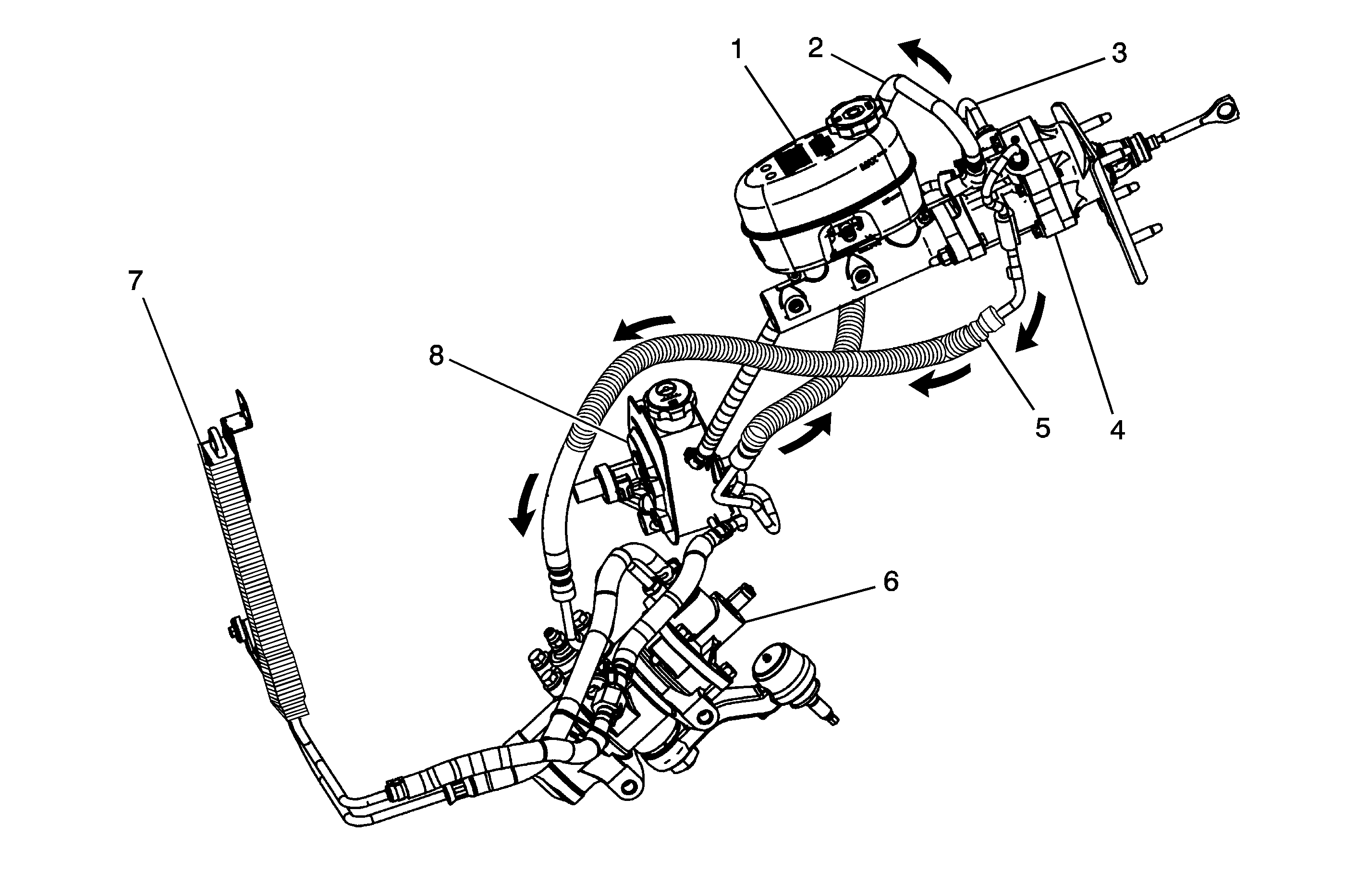Brake Assist System Description and Operation Vacuum Assist
System Component Description
The brake assist system consists of the following:
Brake Pedal: Receives, multiplies and transfers brake system input force from
driver.
Brake Pedal Pushrod: Transfers multiplied input force received from brake pedal to brake
booster.
Vacuum Brake Booster: Uses source vacuum to decrease effort required by driver when applying
brake system input force.
When brake system input force is applied, air at atmospheric pressure
is admitted to the rear of both vacuum diaphragms, providing a decrease in
brake pedal effort required. When input force is removed, vacuum replaces
atmospheric pressure within the booster.
Vacuum Source: Supplies force used by vacuum brake booster to decrease brake pedal
effort.
Vacuum Source Delivery System: Enables delivery and retention of source vacuum for vacuum brake
booster.
System Operation
Brake system input force is multiplied by the brake pedal and transferred
by the pedal pushrod to the hydraulic brake master cylinder. Effort required
to apply the brake system is reduced by the vacuum brake booster.
Brake Assist System Description and Operation Hydraulic Assist


